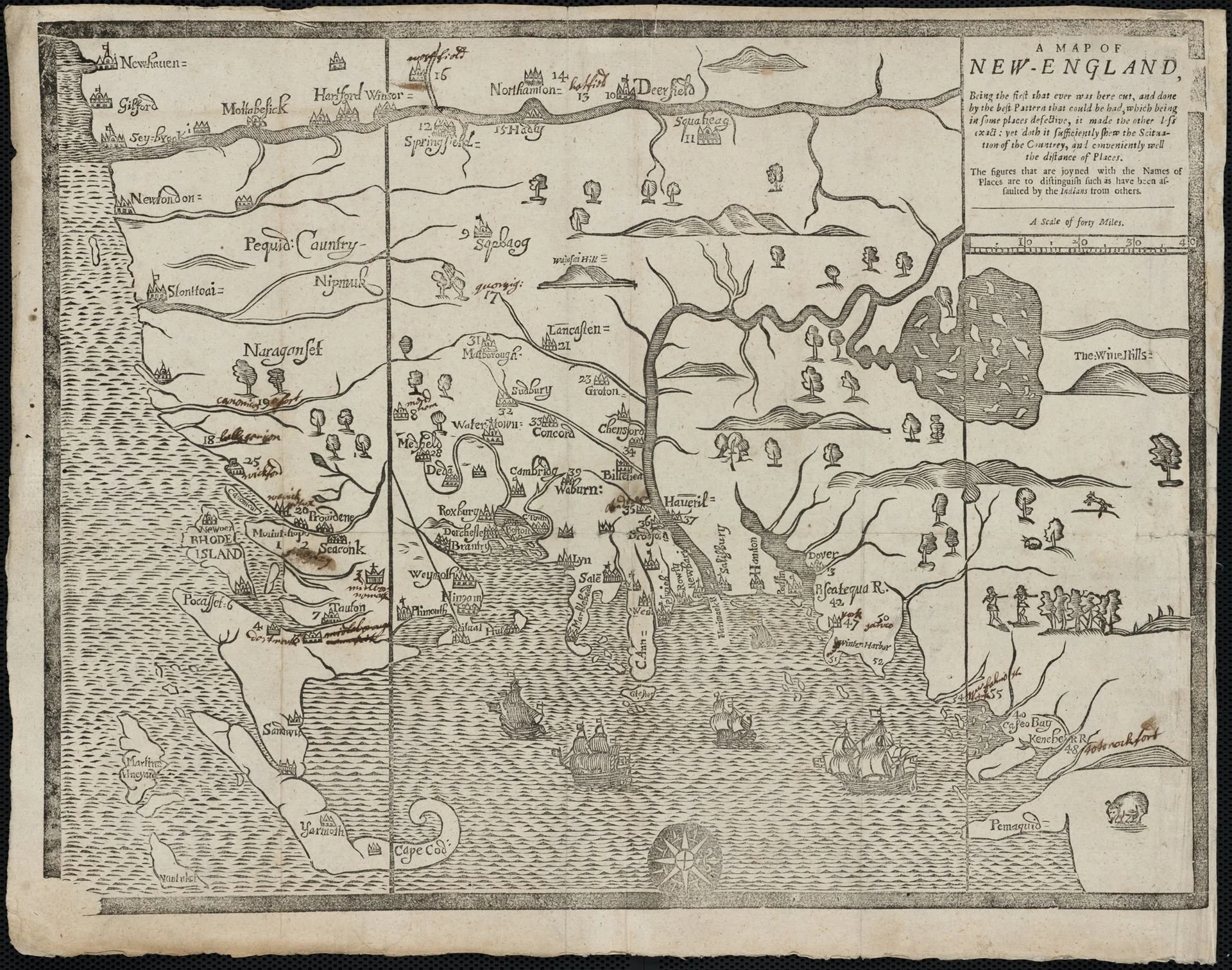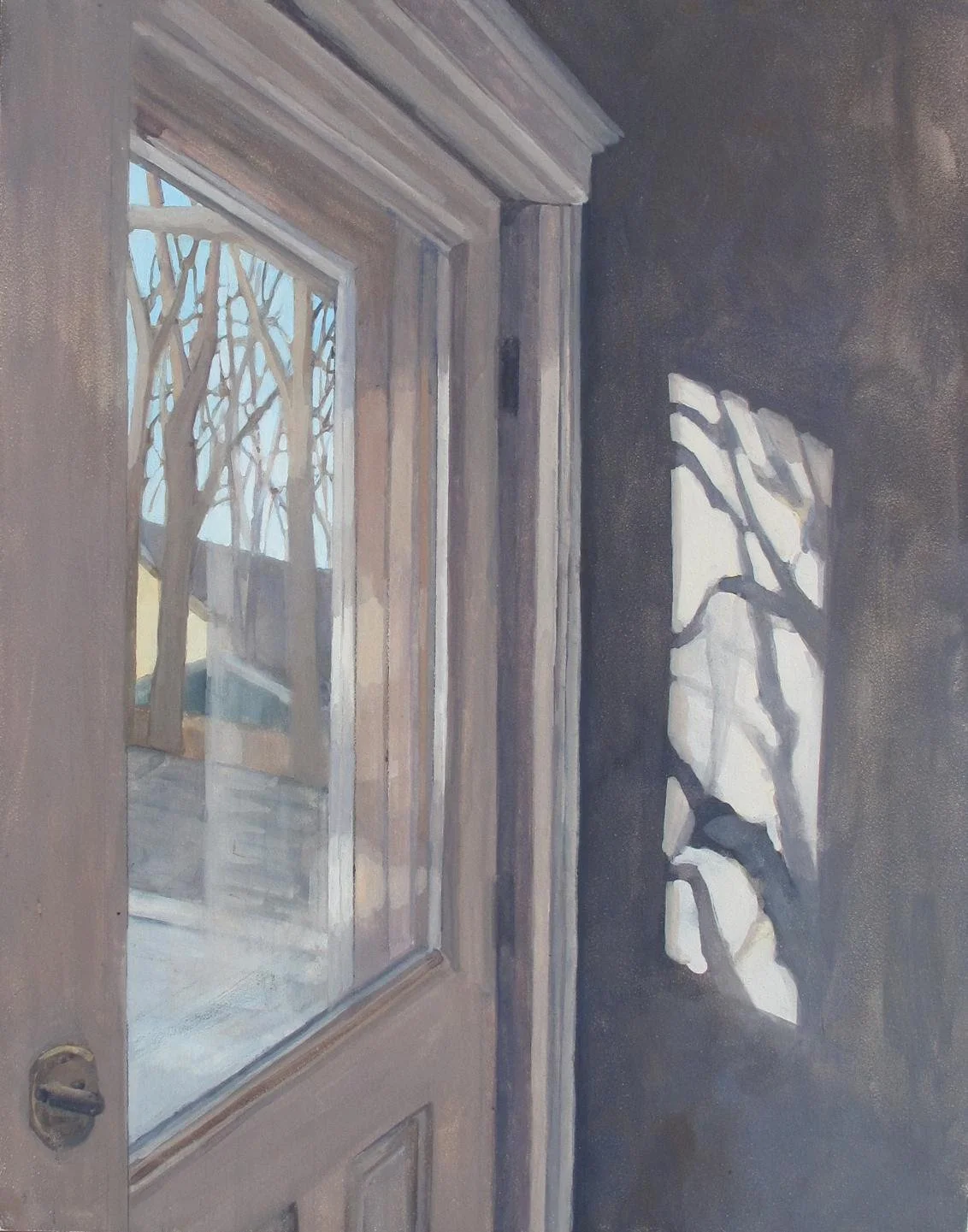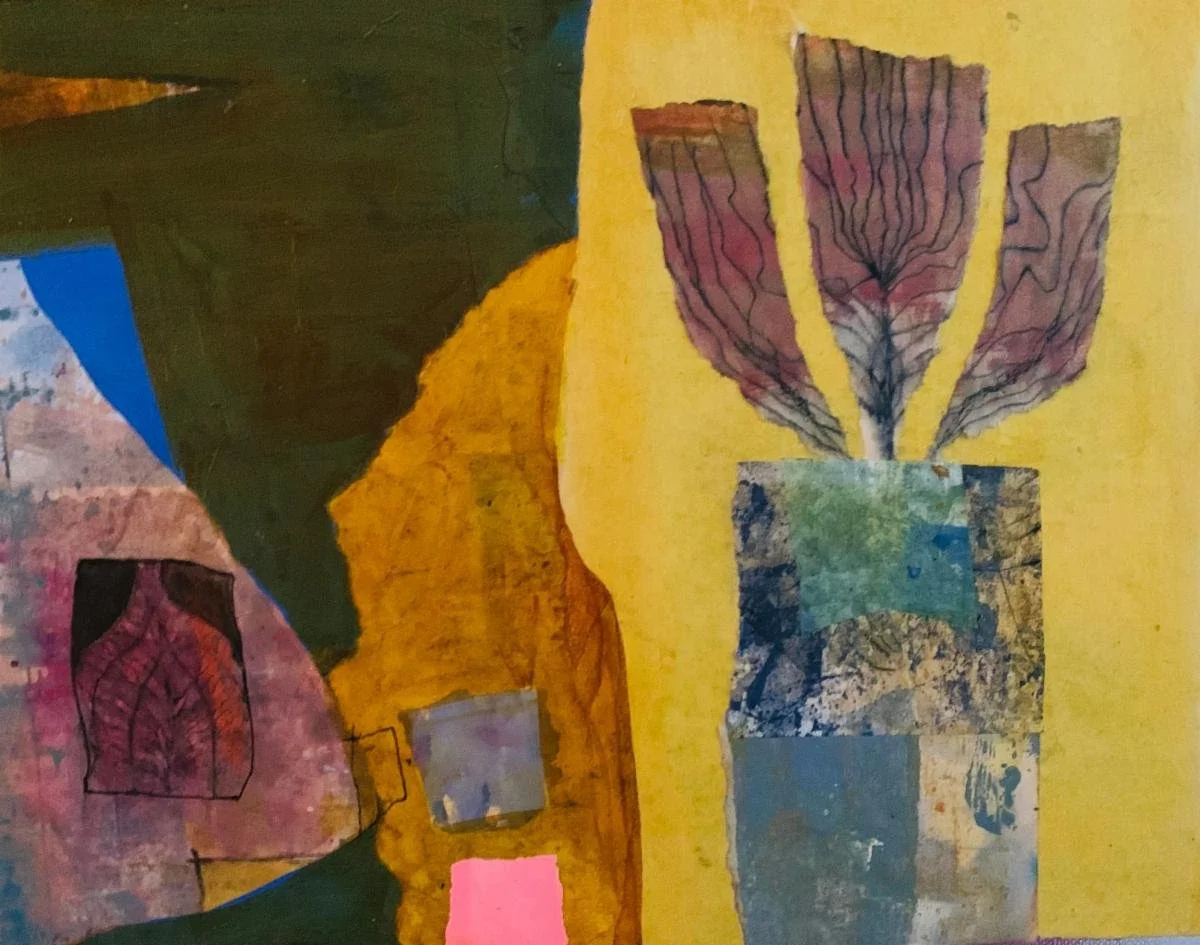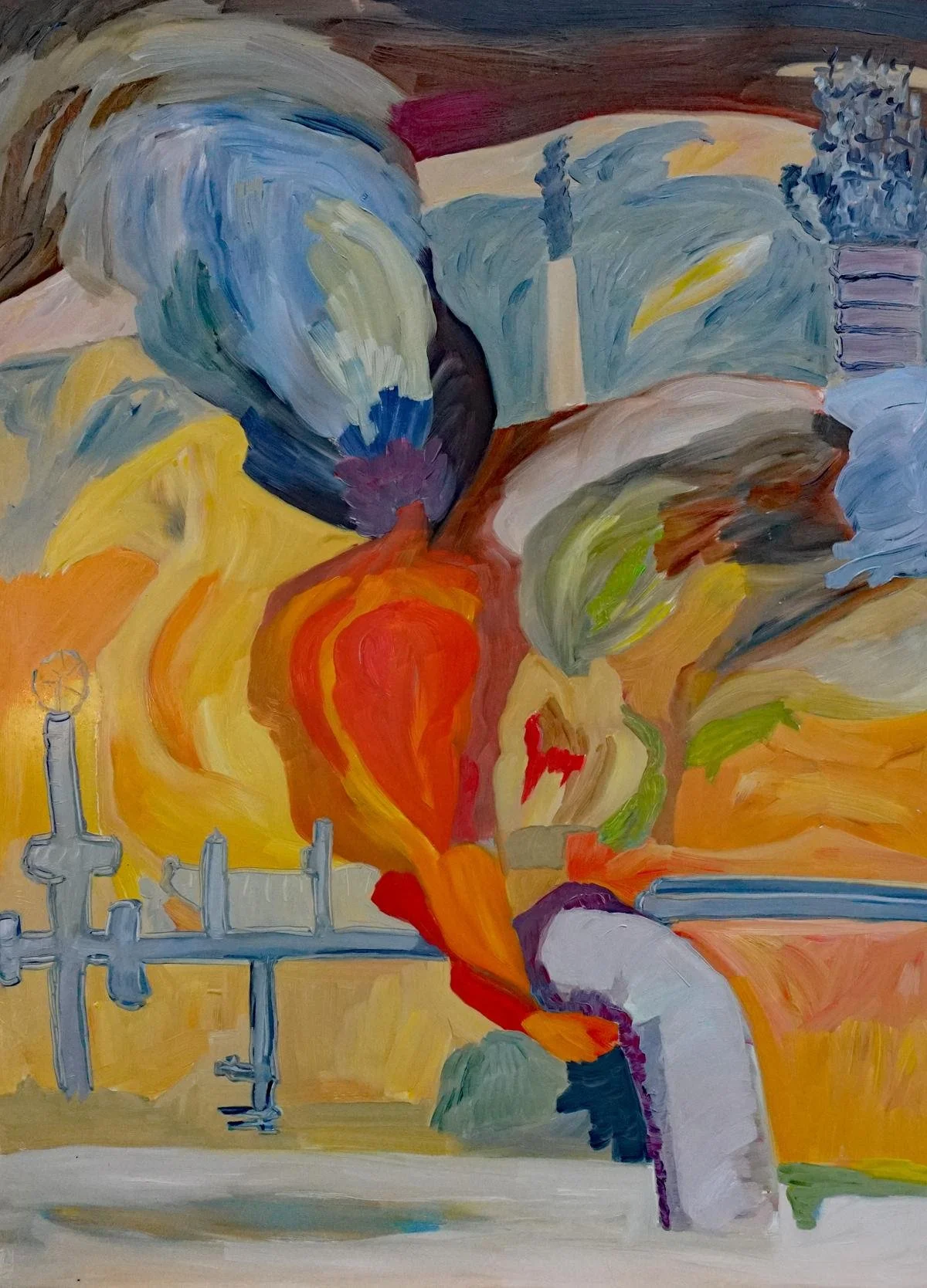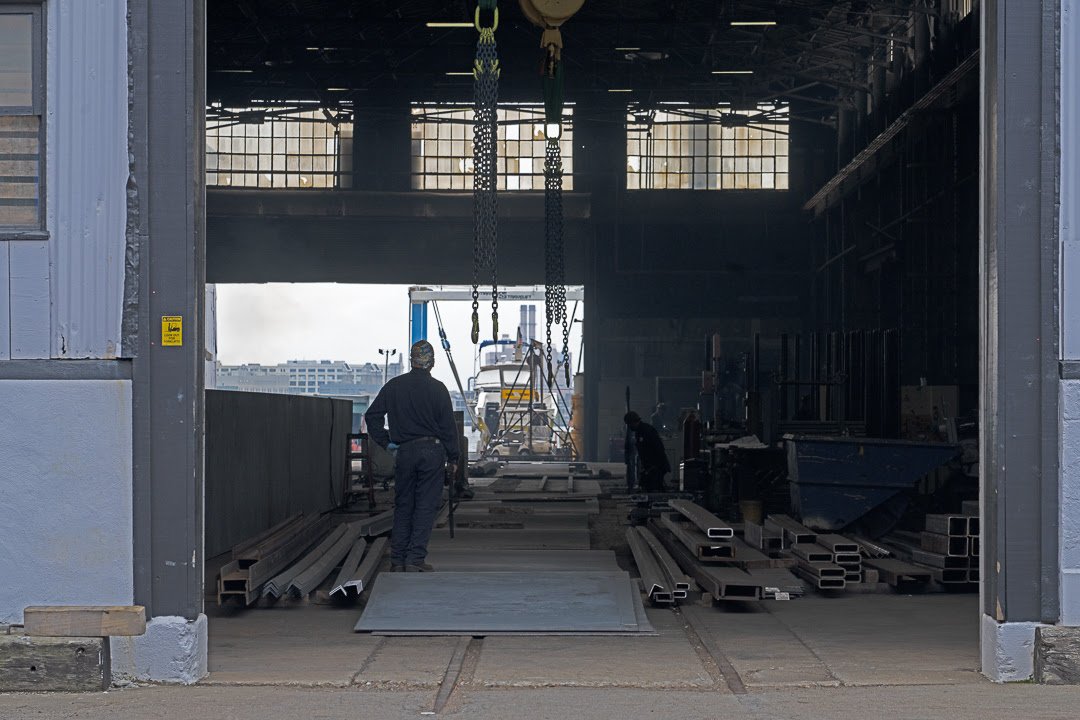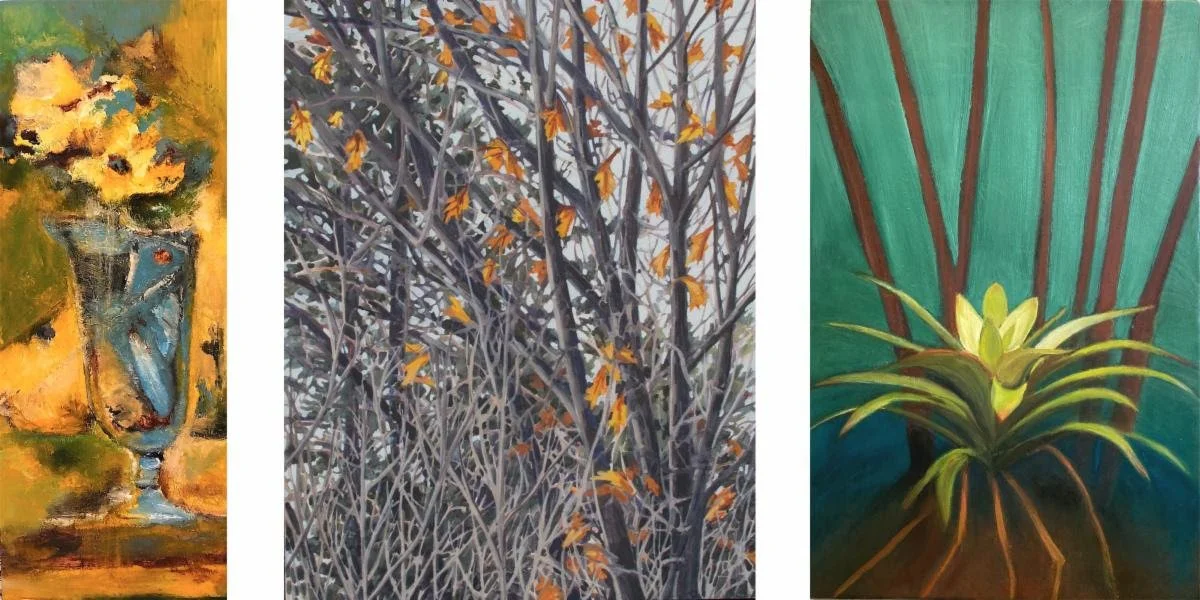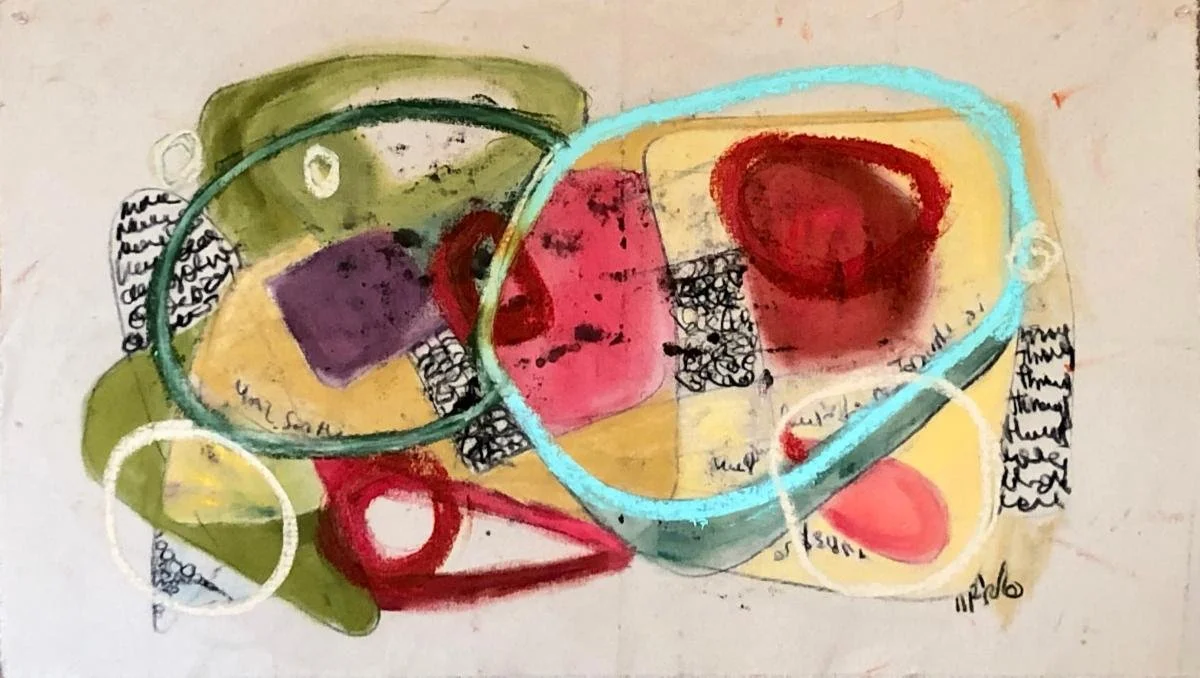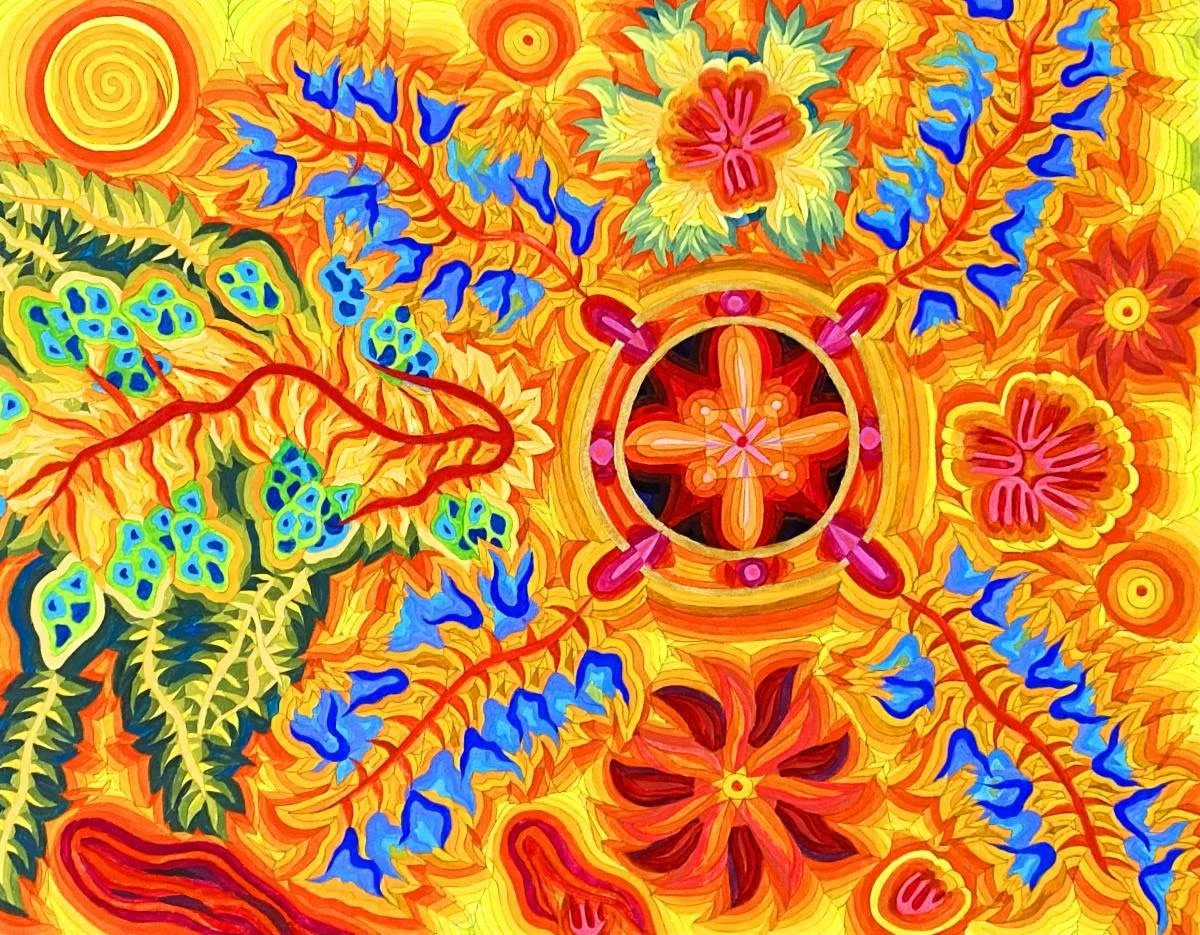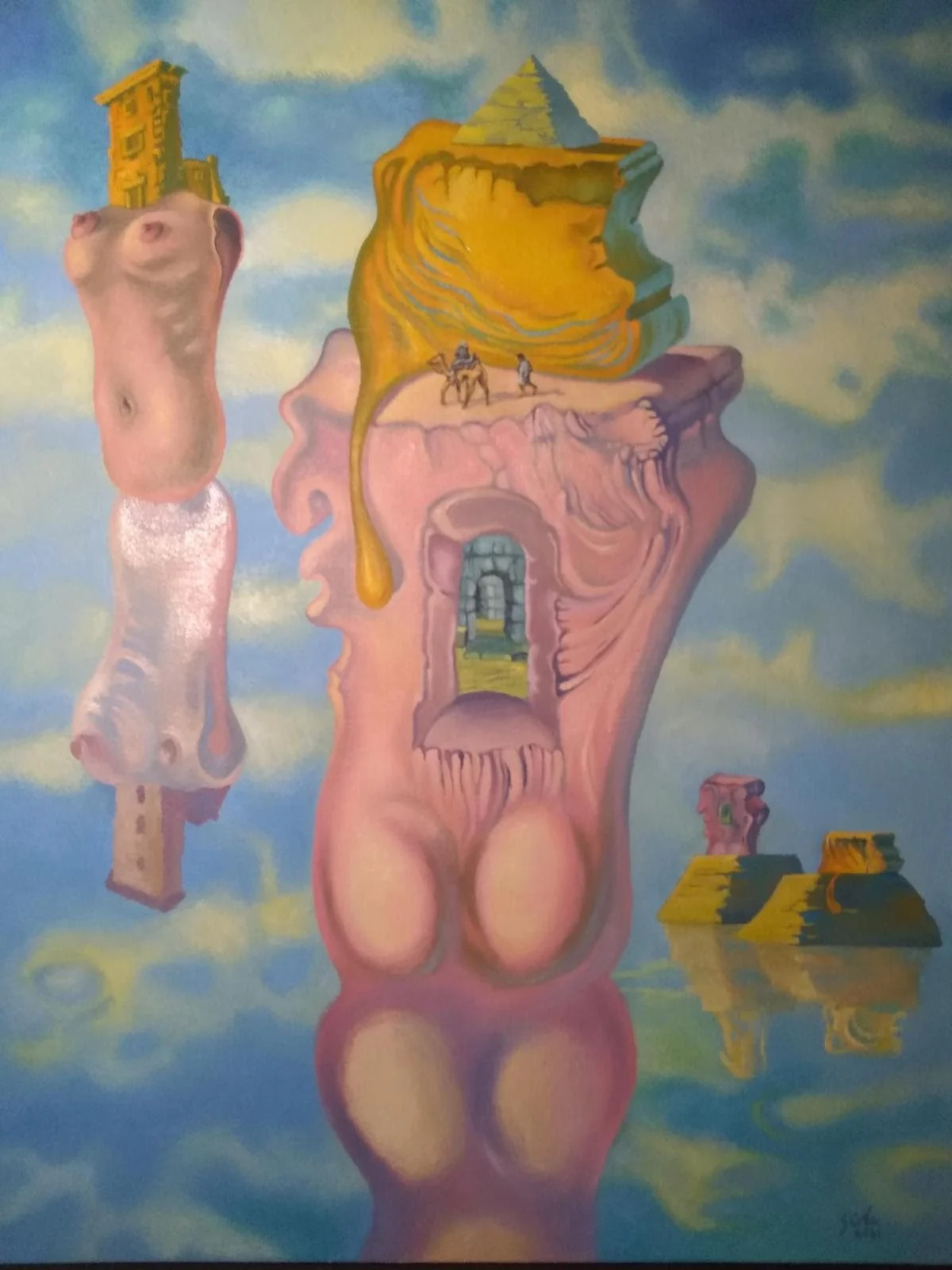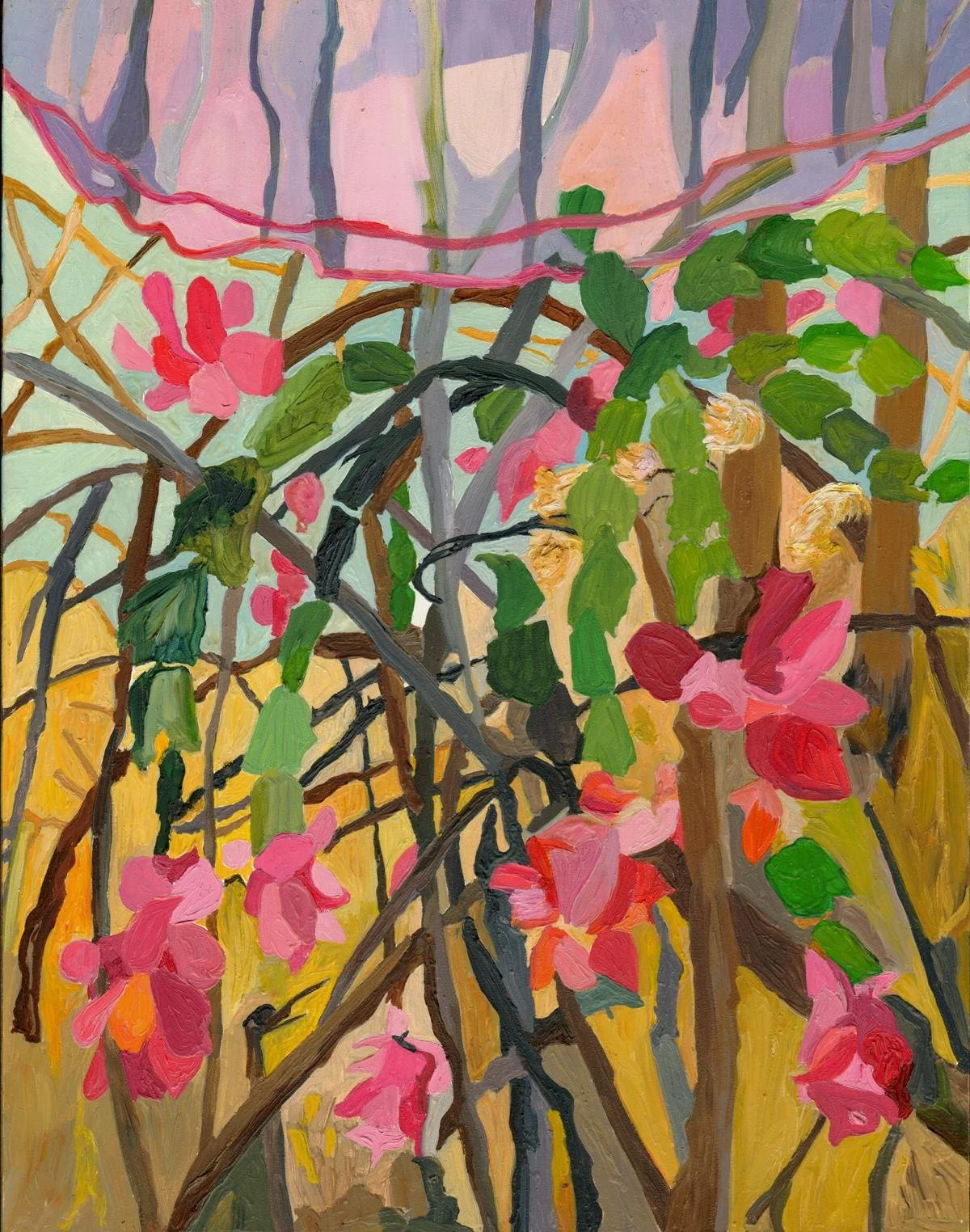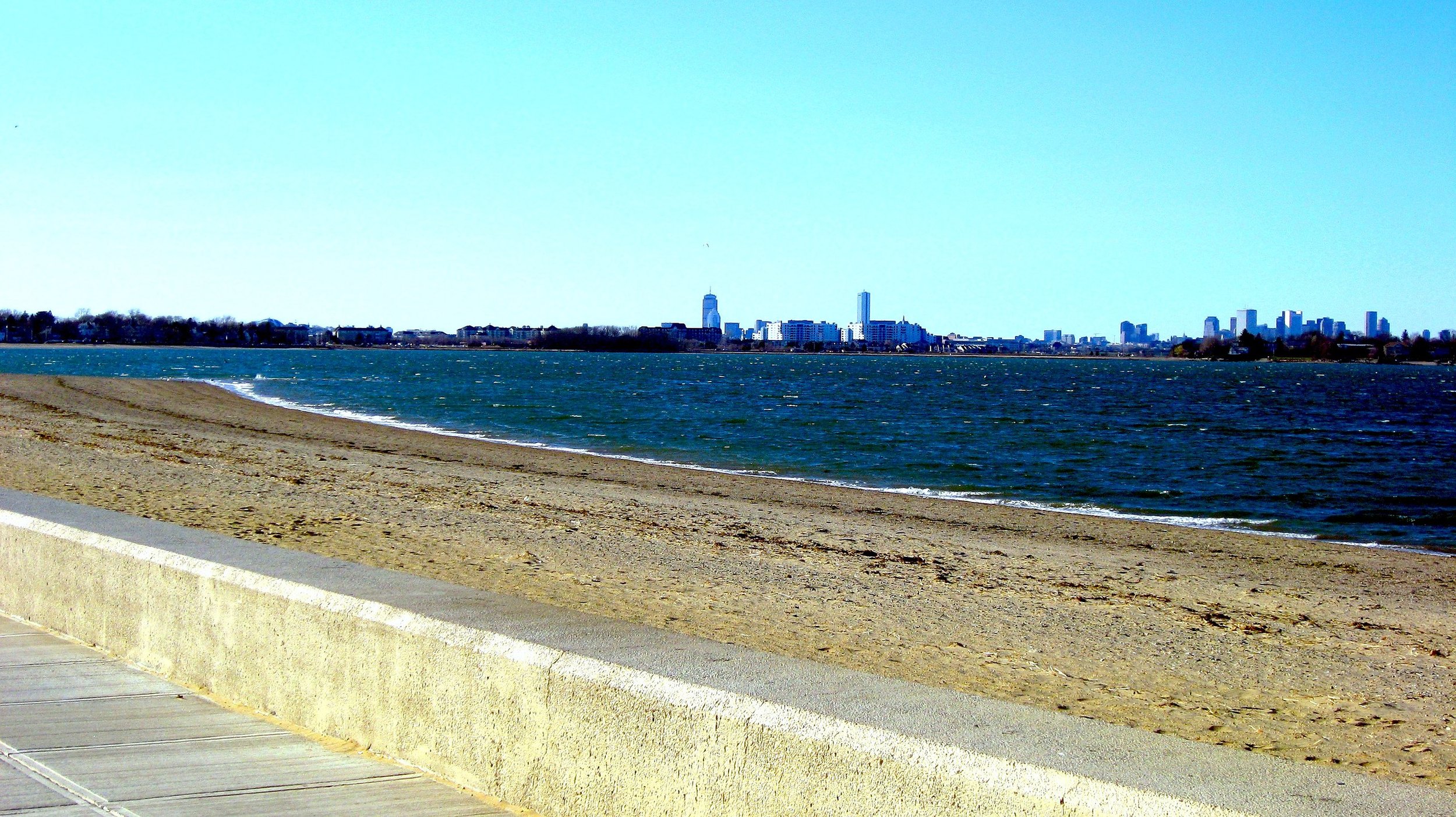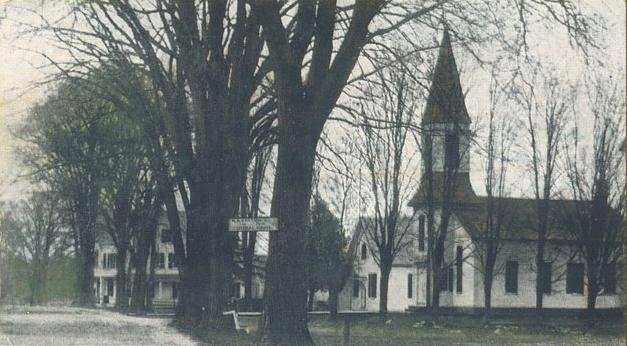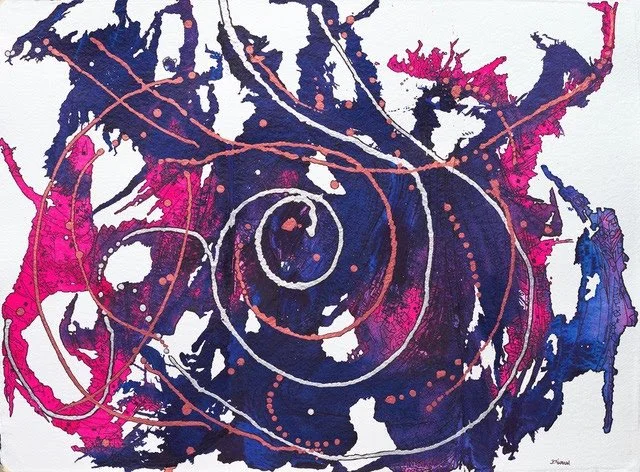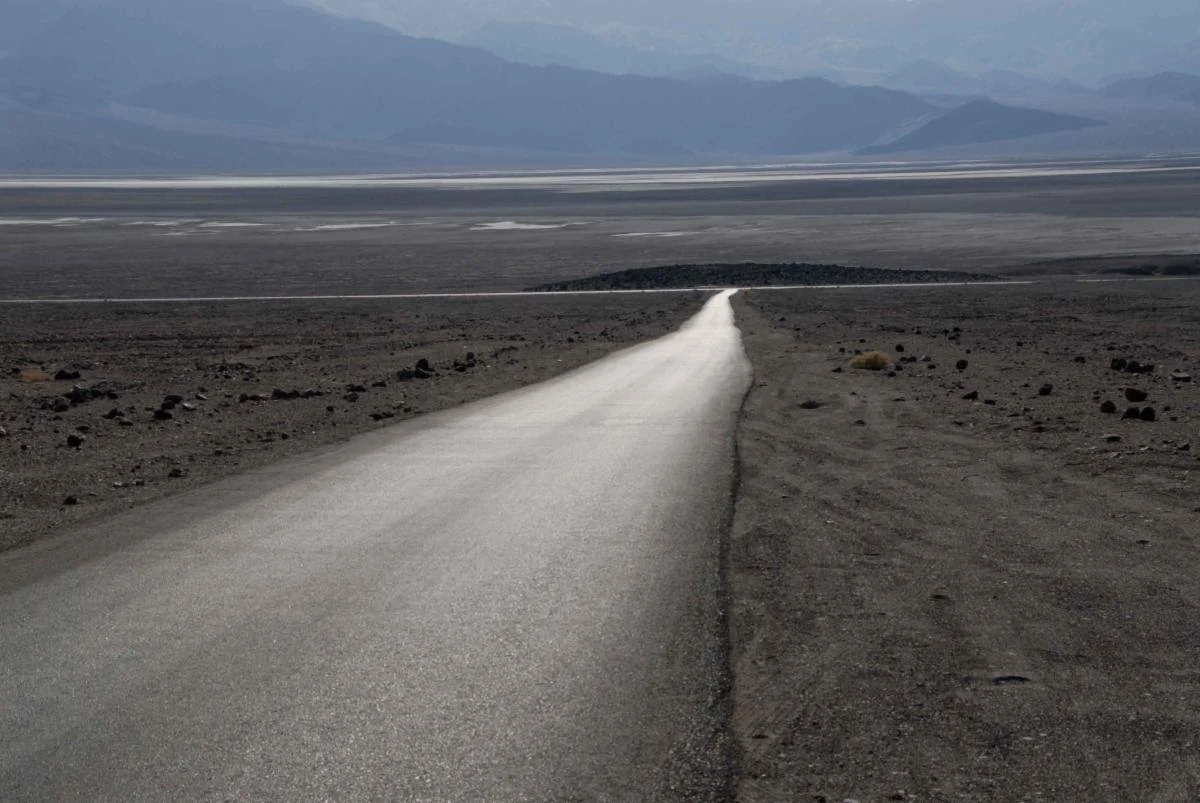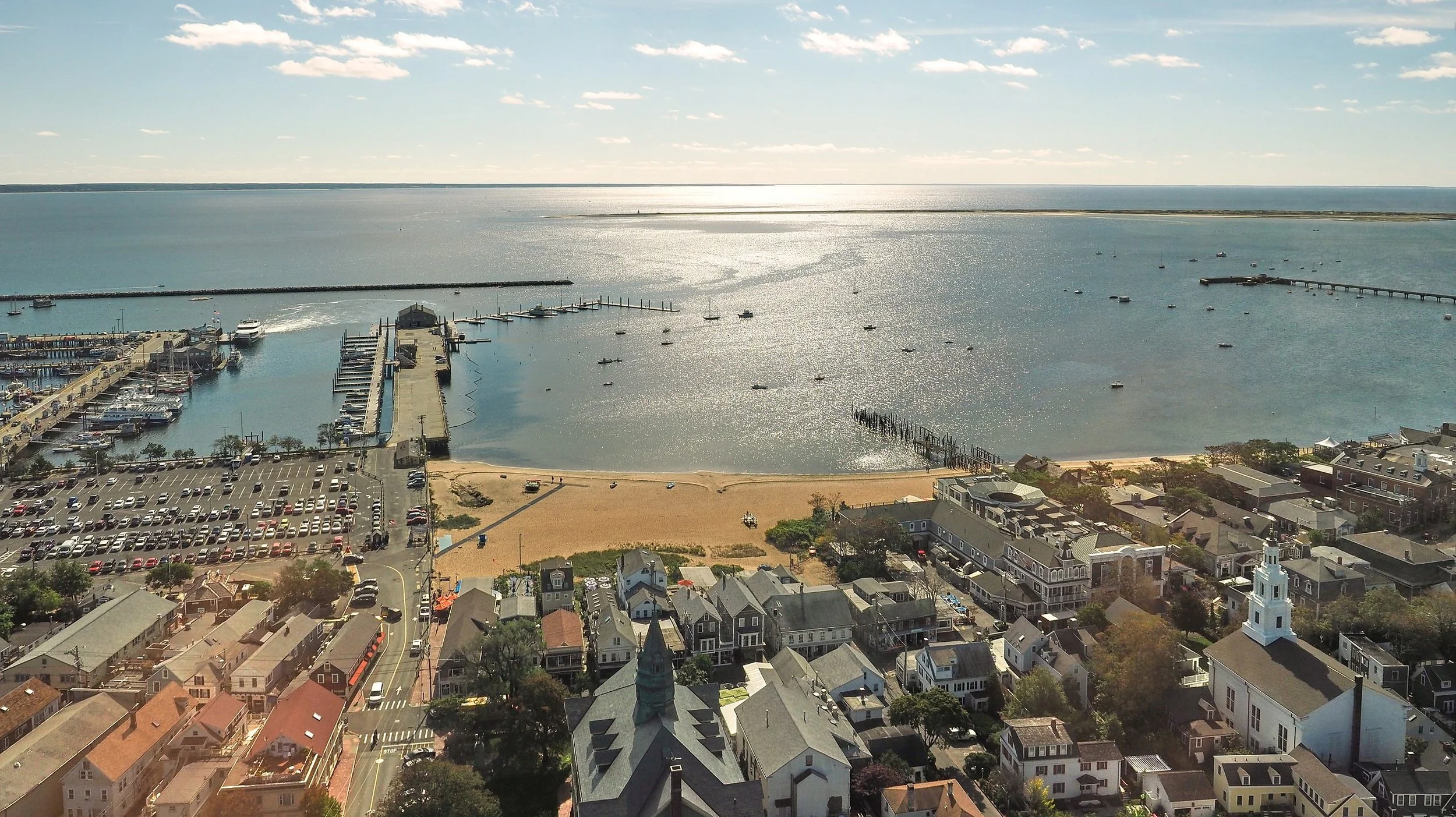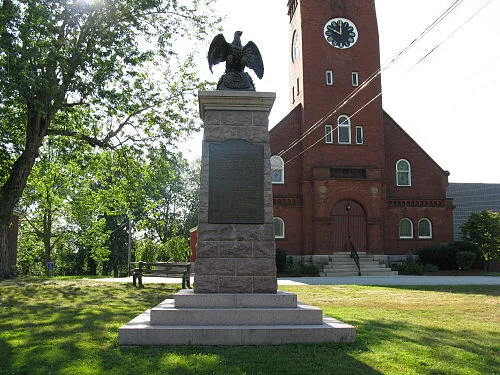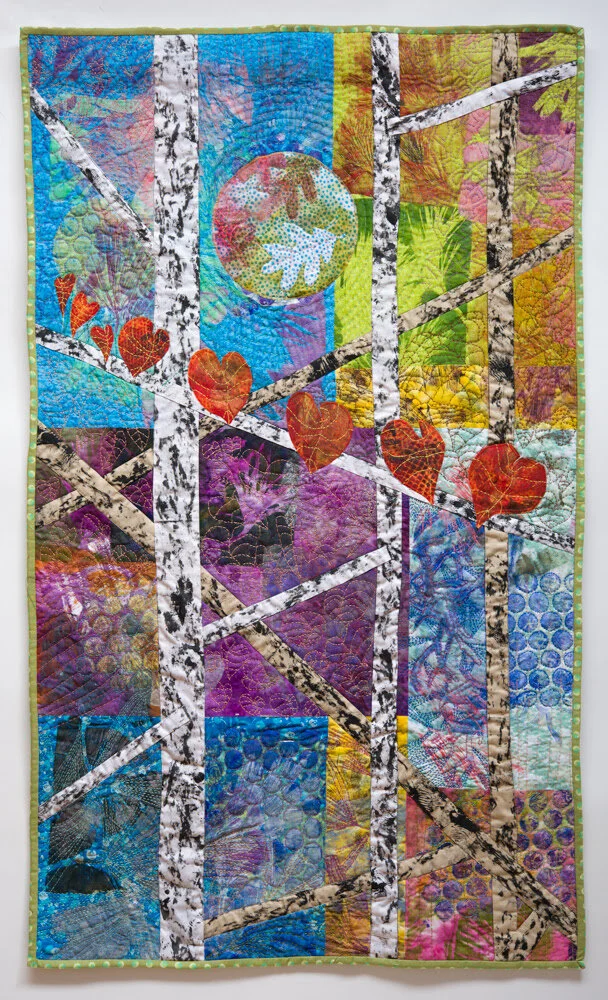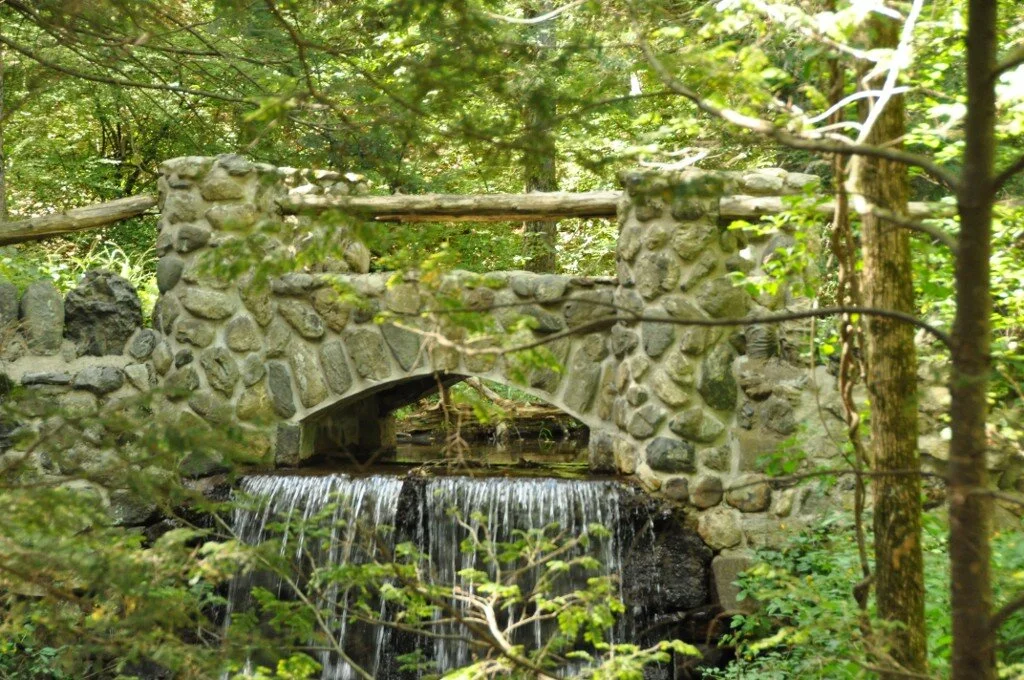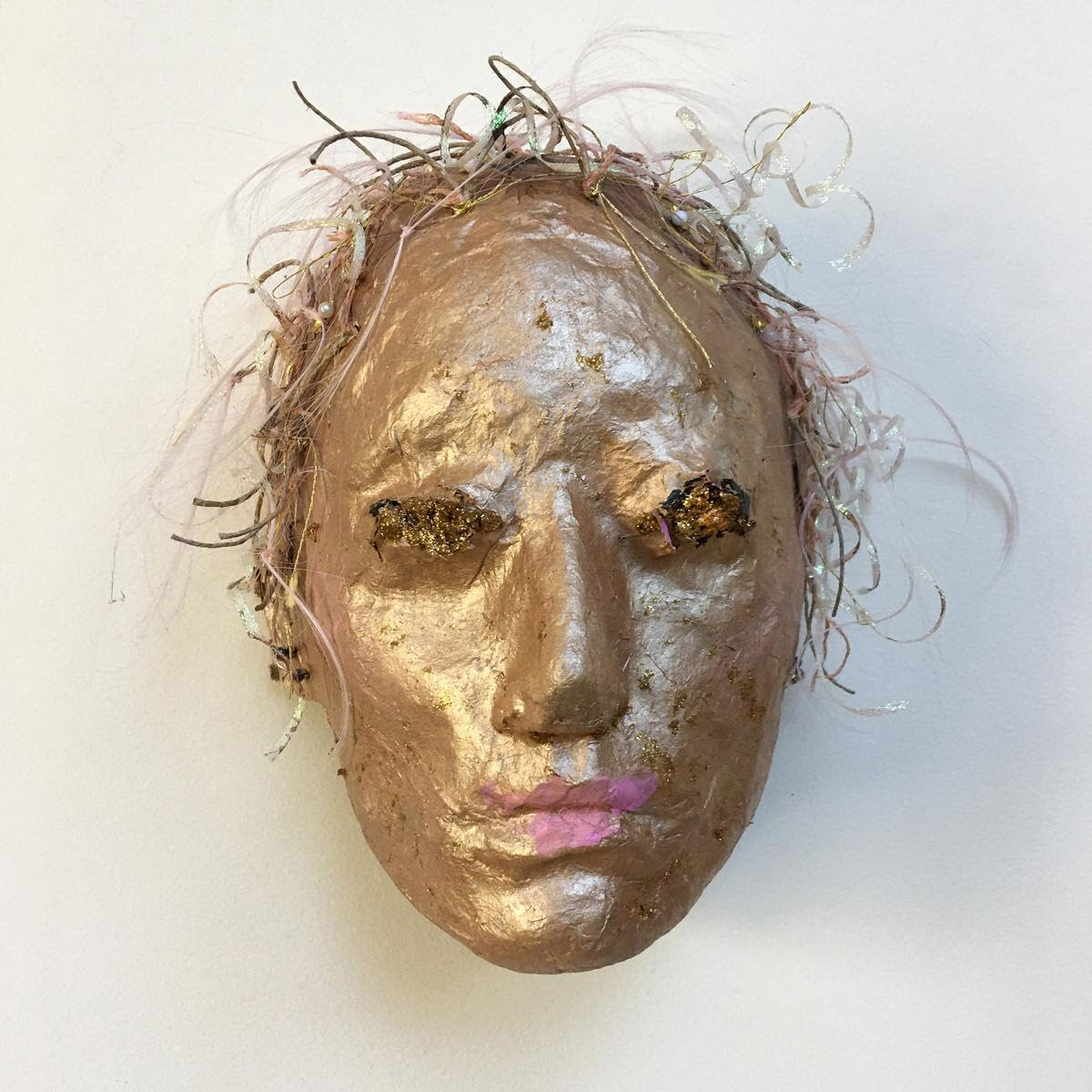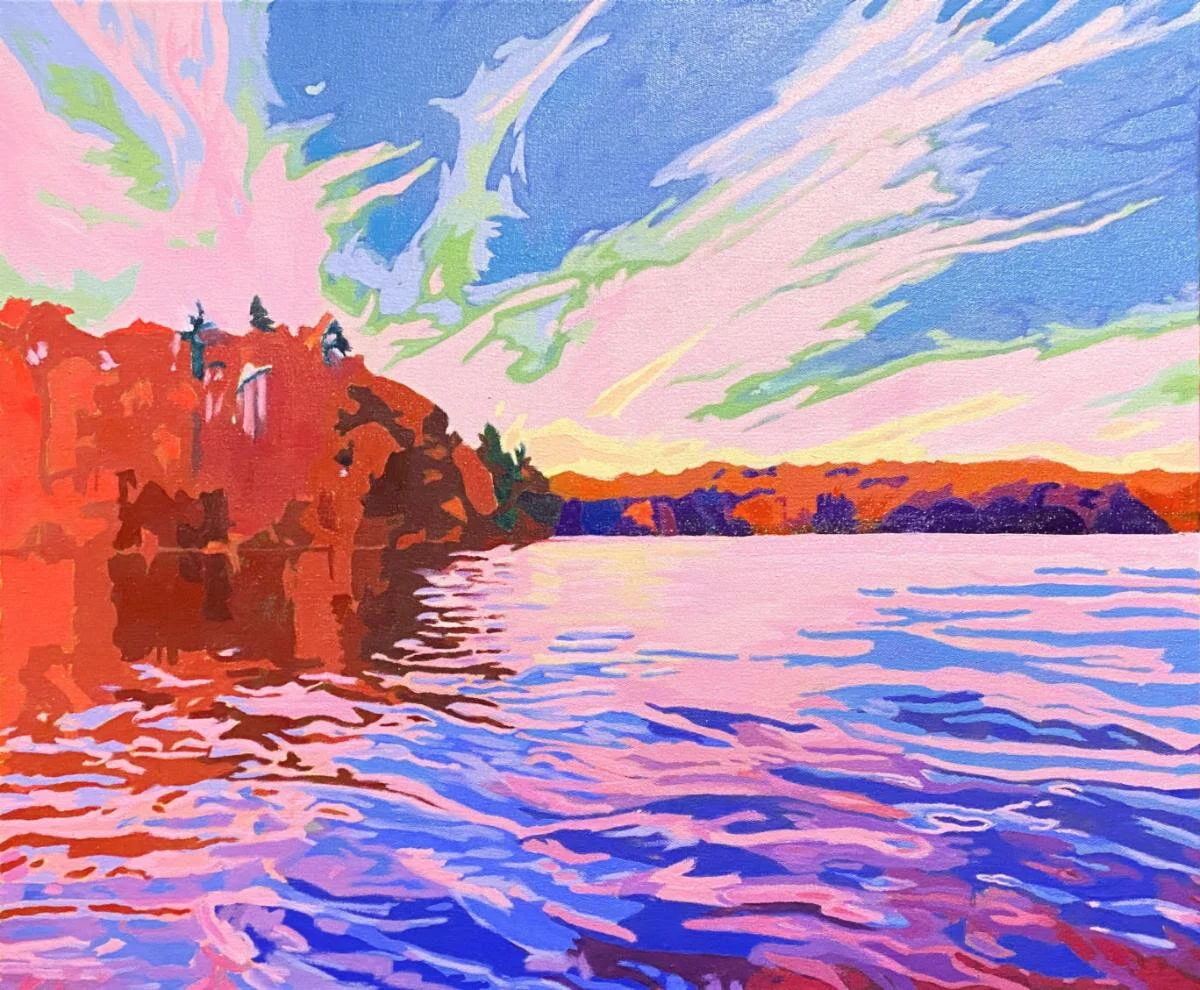Lunar exploration
“A Different Dawn” (encaustic) by Boston-based painter Deniz Ozan George, in her show “Wax and Wane…Ebb and Flow,’’ at Galatea Fine Art, Boston, July 1-31.
She says:
"‘Wax and Wane... Ebb and Flow’ is a personal exploration of the magical and enduring presence of the moon through its many phases, its pull on the oceans' tides and its effect on the life cycles of all living things.
“These mysteries are expressed through the medium of encaustic wax painting and Japanese nihonga-inspired mineral pigment distemper painting.’’
The Bay of Fundy has the highest tides in the world.
The Maria Mitchell Observatory on Nantucket was founded in 1908 and named in honor of Maria Mitchell, the first American woman astronomer. The observatory consists of two observatories - the main Maria Mitchell Observatory near downtown Nantucket and the Loines Observatory (in photo), west of downtown.
‘The complexity of light’
“Shadow Inside 1’’ (gouache on panel), by Cambridge, Mass.-based Vicki Kocher Paret, in show “Shadow,” at Galatea Fine Art, Boston, though June 26.
She says:
"I love the drama of a good shadow: the severe contrast of light and dark, the layers of darkness that fall on various surfaces, the fanciful patterns created from flattened three-dimensional form. Painting shadows is a study in the complexity of light, and often through the process, exposes things unnoticed or unseen. The mesmerizing power and beauty of shadow serves to reveal the extraordinary in the ordinary - a useful thing for the spirit."
'Untenable relationship'
“We're Made of the Same Stuff” (mixed media), by Susan Leskin, in her show ‘‘Feeling the Heat,’’ at Galatea Fine Art, Boston, June 3-26.
She says; "The relationship between humans and nature has become untenable: so very dangerous and so infinitely sad. Regardless, we must summon as much energy and will as possible, and repair what we can. At a basic level, it comes down to what each of us is willing to give up."
‘Seasons and Chaos’
“{Gas} Compressor Station” (oil on panel), by Yvonne Troxell Lamothe, in her show “Seasons and Chaos,’’ at Galatea Fine Art, Boston, May 1-June 1. {The painting refers to controversial compressor along Boston Harbor in Weymouth, Mass.}
She says: "Aware of the vulnerability of our environment by abusive corporate mandates and irresponsible policy, I make statements through my work that hopefully cause concern and evoke the sense of urgency I feel."
‘Shapeshifting beauty’
“Harmony” (oil and wax on copper panel), by Brookline, Mass.-based Nora Charney Rosenbaum, in her show “The Language of Birds,’’ at Galatea Fine Art, Boston, May 1-June 1.
“When I see a colony of cormorants silhouetted on seashore rocks, their shapes can seem like cryptic hieroglyphs from some arcane mythology. Looking closer, they become recognizable as individual characters in a dialog of social interactions.
“In my painting I try to capture their rangy, shapeshifting beauty. Using oil paint and sometimes wax and sand on copper-covered panels helps me express their liveliness."
She says in her artist statement:
“For me the process of painting is the solving of problems - color, form, texture and composition. My technique is to layer oil paint in thin glazes or sometimes mixed with wax over chemically treated copper to produce an optically complex surface. Light passes through some layers and reflects off others to give an impression of atmosphere and luminescence.
“Painting is always a leap into the unknown. Trying to capture the depth, motion and sense of transparency in this ephemeral world is a challenge.’’
Boston Harborwalk
“East Boston Boat Yard” (photo), by Alan Strassman, in his show “Boston Harbor: Views From the Shoreline’,’ at Galatea Fine Art, Boston, May 1-June 1.
Mr. Strassman explains:
"For more than 30 years, the City of Boston, Massachusetts state agencies, private developers and waterfront residents have been working together to create the Boston Harborwalk – a pedestrian-friendly walkway running more than 40 miles from Dorchester in the south to Winthrop in the north.
“These are some scenes from the edge of the harbor."
Fine art to benefit Ukrainians
Left: work by Jennifer Okumura; middle: Vicki Kocher Paret; right: Nora Charney Rosenbaum
Artists at Galatea Fine Art, Boston, have come together to offer works for sale to benefit the Ukrainian people.
The gallery says:
“Let our degrees of hope and peace become legitimizing solidarity banners for Ukraine and 'anyone' who suffers in any corner of the world. A sense of unity reassures us that the world is a pleasant place underneath human complication. All profits are going toward Ukrainian relief.’’
Celebration of contours
“Urban Form” (mixed media), by James C. Varnum, in his show “Contours of Change,’’ at Galatea Fine Art, Boston, March 4-27.
Galatea quotes him:
"In this exhibit … the pieces show my interpretation of changes in weather patterns and effects of climate disasters in our environments. I am influenced by the smoke maps of the world’s wildfires and by contemporary Australian Indigenous Art.
“These pieces are on cradled Claybord panels in mixed media. I create textures in acrylic molding paste, apply color and marks, then pour liquid acrylic over the work. When dry I apply more markings until the work is completed.
“I have always focused on the contours created by textures in my paintings, but these works are a change for me, from working on flat papers to creating on low-relief surfaces."
Art from science
Haleh Fotowat, “Multicellularity II: (oil and charcoal on unprimed canvas), by Heleh Fotowat, in her show “Multicellularity,’’ at Galatea Fine Art, Boston, Jan. 29-Feb. 27.
Art from science! She is also a staff scientist at Harvard’s Wyss Institute for Biologically Inspired Engineering, in Cambridge.
She tells the gallery:
"Inspiration for this body of work comes from unpredictability, urgency, continuity, beauty, humor, and enthusiasm that is omnipresent in all forms of life. My painting process consists of spontaneous, uninhibited drawing of shapes, trajectories, words, and numbers, usually with a pen or pencil. I often listen to improvised jazz music while I work, letting my hand go free and move as it needs to. I sometimes even dance. Then I add paint, going back and forth between drawing and painting. I watch, listen to, and encourage conversations between individual elements that surface as I go along, as they form a coherent 'multicellular life form.’’’
‘Only what my consciousness allows’
“The Uncertainty Principle” (graphite and acrylic on canvas), by Newton, Mass.-based Frank Capezzera, in his show “The Self as Universe: Figurative Musings in Cosmology (or the All-Compassing Universe)” Jan. 22-Feb. 27, at Galatea Fine Art, Boston.
He tells the gallery:
"...This series of paintings was developed through my amateur enthusiast’s reading of current cosmological subjects … including Newtonian and Einsteinian physics, quantum mechanics, mathematics, and astronomy from the Big Bang to the emergence of modern human consciousness. I contemplate the elementary debris of stars becoming organized into rocks, then one cell organisms and now human consciousness and self-awareness able to pose limitless questions about everything, including ‘is death the end?’
“The range of images in some of the paintings is among the very large (galaxies, nebulae, stars) or the very small (electrons, quarks, and other subatomic characters of what’s called the Standard Model) and human scale, that which we relate to intuitively. The paintings contain remnants of symbology, both mathematical and anthropological ideograms, such as kanji. For example, the Japanese kanji meaning ‘all-encompassing universe’, sometimes referred to in Aikido, either appears in the paintings or was used as an ‘armature’ for the construction of figures.
“The paintings, two dimensional in charcoal and paint, result from personal musings on how the universe might fit together including (1) how the very large (galaxies) and the very small (subatomic quanta) and gravity work together and (2) will there be anything left of me after I die? As I write this I know only what my consciousness allows. Strangely, what might be scary feels like the way for me to go. I feel as if I am crossing into the zone within myself to contemplate unknowable answers to questions in a new and evolving art-making experience."
‘Between energy and calculation’
“ Immanent Arrival’’ (gouache on panel), by Marjorie Kaye, at Galatea Fine Art, Boston, through Jan. 16. She’s a Boston area sculptor and painter.
She says:
”My gouache paintings are built from the observation of complexity and my intention in actualizing sequential order. I need to work as if untying a complicated and seemingly impossible knot. The forms are immediately organic, swirling and undulating from one end of the surface from the other. Once this has been established, I go in honing, working each shape, dissecting it into its unique rhythm. This is the secondary aspect of making each work, and the action that ties the shapes into a whole, one that balances between energy and calculation.’’
Climb every body
“Enochian Landscape” (oil on canvas), by James Cole, at Galatea Fine Art, Boston, through Jan. 16
A temporary treatment for SAD
“Christmas Cactus, Winter Light” (oil on panel), by Yvonne Troxell Lamothe, in the show “Beyond the Curve,’’ at Galatea Fine Art, Boston, Dec. 3-Jan. 16
The gallery says:
“{Ms. Lamothe} has been producing both oil paintings and watercolors mainly completed en plein air. Yvonne embraces her roots in New England. Finding intrigue with marshlands, woodlands and glorious vistas of Quincy, Mass., and Greater Boston’s South Shore, where she now lives and her cabin in Ossipee, N.H., and the White Mountains where she finds solitude gives her ample inspiration for painting. Trips to the Maine coast and Vermont offer great additional and endless places to stop and paint. It is no wonder that such a range of American painters have found their way here to New England. Among her favorites are Marsden Hartley, Lois Dodd and Milton Avery. Her paintings show close connections to the earth because of the unusual perspectives that she finds to insure a closeness to her subject. Color is of essence to Yvonne and this joy can be felt in her work. And, of course, as the earth becomes more threatened, she hopes her paintings will inspire others to take time to appreciate and celebrate our planet.’’
View of Marina Bay and Boston across Quincy Bay from Wollaston Beach, in Quincy
Center Ossipee in 1915
We’re all stuck in it
“Gyre” (watercolor and ink), by Newton, Mass.-based painter James Varnum in the show “Beyond the Curve: Members’ Exhibition,’’ at Galatea Fine Art, Boston, Dec. 3-Jan. 16
He writes:
“My intent is for viewers to create an association, or an interpretation of the painting that triggers their own narrative.’’
“I was a creative child who liked to sit at the dining room table and draw. I took art classes at the local library during the summer in the small, rural village where I grew up, in Southern New Hampshire. After high school I studied art in Boston and San Francisco, where I earned a B.F.A. from the San Francisco Art Institute.
'‘I soon learned that I could not support myself and a new family as a fine artist, so I went into education, earned a M.Ed. and became a classroom teacher. After nine years, I wanted to specialize my work with children. I earned a M.S. in communication disorders and worked as a Speech Language Pathologist before retiring in 2011. During those thirty-plus years, I kept in touch with my creative side by taking art classes through various continuing education organizations.’’
”Upon retiring, I promised myself that I would pursue art once again. I kept that promise and am an active artist in the Boston area. I belong to several other art associations and actively exhibit my paintings. I classify myself as an experimental watercolor painter.’’
Chestnut Hill Reservoir, near Boston College, in Newton
'Inner landscapes'
“Death Valley” (archival pigment print), by Jane Paradise, in her joint show with Alan Strassman, “American Landscape: Two Views,’’ at Galatea Fine Art, Boston, through Nov. 28.
She writes:
“My photographs represent several road trips across the East and West coasts over the past 13 years. Before my husband came down with Alzheimer’s, these road trips were an integral part of our lives. During one road trip up the California coast, we carved our initials into the side of a bullet-ridden abandoned car, shown in the image ‘Vichy Springs.’
“Looking over the photographs of our travels, I selected images that reflect the vast variations of the quirky American experience. Underlying the images of our culture are themes of its humanity. Sometimes it is turning away from one's surroundings to survey inner landscapes, catching a moment in time."
She lives in Provincetown.
Over Provincetown: Looking south east from the top of Pilgrim Monument. Macmillan Wharf, far left. Fishermen's Wharf, left-center. Coast Guard Pier, far right. Long Point, right and center, just below the horizon, with Long Point Light near the tip (just left of center).
— Photo by RoySmith
'They collide'
“Stalking Heron” (welded found steel scrap), by Madeleine Lord, in “Art Forward,’’ a group show of the National Association of Women Artists, at Galatea Fine Art, Boston, Nov. 5-Nov. 28.
The gallery says:
“Art Forward' is a group exhibition of 2D and 3D works that explore all things that have their turn to change with time. In us, past, present, future meet. They collide and synthesize cultures - allowing time to change, end, begin a new. Change is life, inconsistent as our future is time's excuse. The future frightens us, too profound and vague, but change is hopeful, healing, and leaves us smiling ahead.’’
Madeleine Lord is based in Dudley, Mass., south of Worcester and on the border with Connecticut. George Washington really did sleep there.
The Soldiers and Sailors Monument in Dudley, designed by renowned Canadian-born sculptor John A. Wilson, who eventually was based in the Chestnut Hill section of Newton, Mass. The statue is meant to honor veterans of all American wars.
Renowned Modernist architect Walter Gropius called Wilson’s studio “the most beautiful in the world."
Creative walks through The Fells
“Winter Fire” (mono-printed fabric hand sewn with perle cotton), by Agusta Agustsson, in her show “Forest Bathing,’’ at Galatea Fine Art, Boston, through Oct. 1-Oct 31.
She explains:
"My walks through {The Middlesex} Fells on the edge of my city provide me with inspiration, material resources and spiritual sustenance. These pieces portray those moments seen from the corner of my eye, sensations rather than clear visions. It might be a branch of beech leaves seemingly afire in a sudden bolt of sunshine or the piney aroma as my feet tread my path. On my walk shapes and textures of common plants will catch my eye and come back to my studio to print fabric for my next piece. As I walk through well-worn paths I see the earth is capable of great renewal. I hope we as a species will allow it to happen.’’
A stone foot bridge crossing an 18th Century dam in the Spot Pond Archeological District of the Middlesex Fells Reservation in Stoneham, Mass.
— Photo by User:Magicpiano
The Middlesex Fells Reservation, often called simply as The Fells, is a public recreation area covering more than 2,200 acres in Malden, Medford, Melrose, Stoneham and Winchester, Mass. The state park surrounds two inactive reservoirs, Spot Pond and the Fells Reservoir, and the three active reservoirs (North, Middle, and South) supplying Winchester.
Beyond makeup
“Shedding” (mixed media), by Christine Palamidessi, in her show “The Future Has an Ancient Face,’’ at Galatea Fine Art, Boston, for month of October.
The gallery explains:
“In 2020, Christine Palamidessi called on the Goddess Nike, the embodiment of Victory, to make a comeback. ‘Who are the warriors, the champions, and what challenges are they fighting?’ the goddess asked. ‘Pandemic. Politics. Conspiracies,’ the artist answered. Nike handed Palamidessi her face, ‘Use it,’ she said.
“The artist used Nike’s face as a container to make masks that embody a swirl of words and emotions: Wuhan, Shedding, Lockdowns, Culture Cancelling, Recounts. She painted, stitched, bejeweled and wrote on the masks; some are frightening and others make us smile. Each reminds us we survived something hard: we entered a world that was interrupted and have the opportunity to create a different, more humane way of life -- a life without masks.’’
Hot colors, cold water
“Lake Sky” (oil on canvas), by Kate Graham Heyd, in Galatea Fine Art’s (Boston) August show, “New England Collective XI.’’ She lives in Hopkinton, Mass., which is most famous as the starting point of the Boston Marathon and of the Charles River.
Seen from (a) space
“Lucekke {a surname} Conglomerate” (paint, gypsum powder, resin), by John V. Ralston, in the “New England Regional Collective ‘‘ show at Galatea Fine Art, Boston, Aug. 6-Aug. 29
